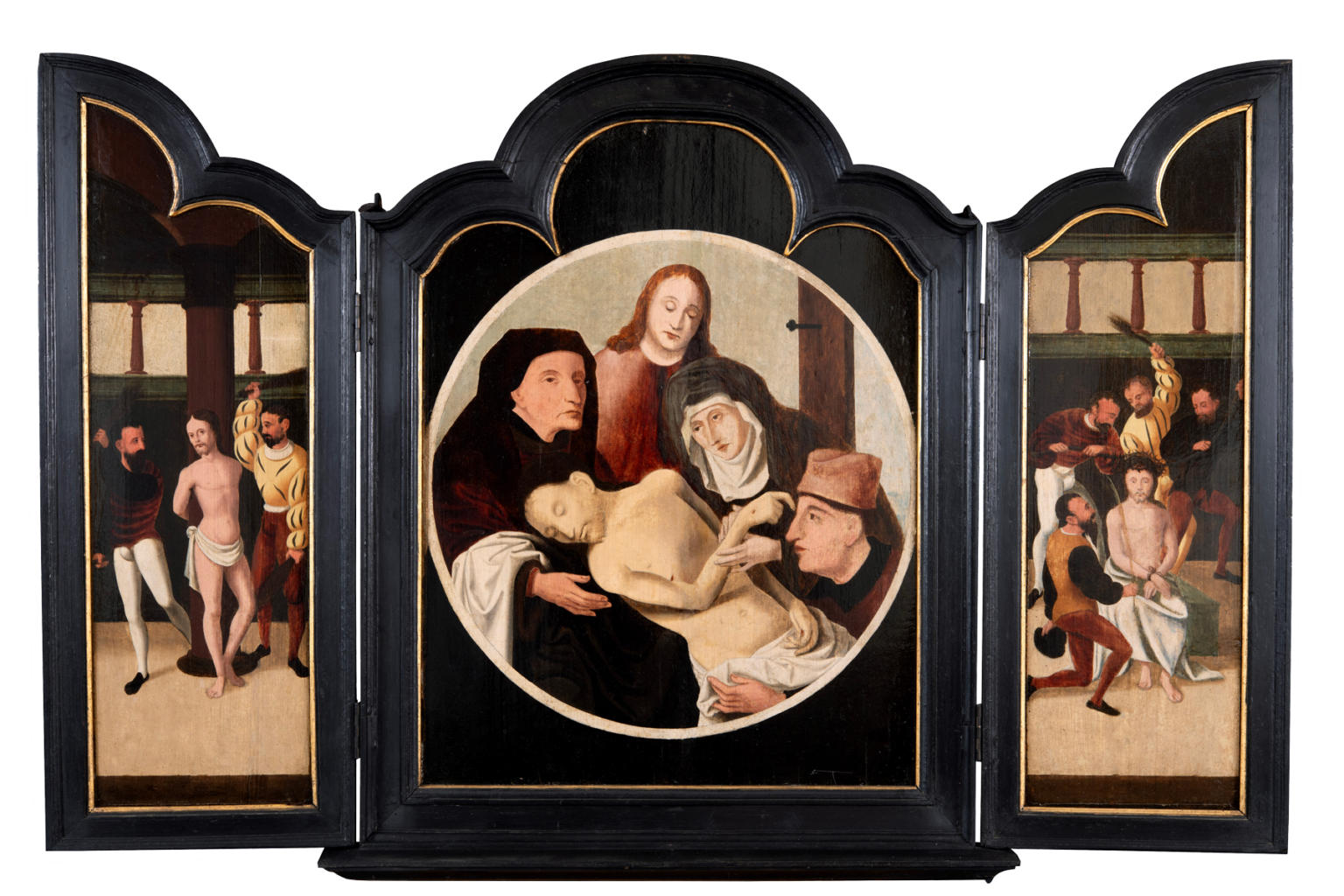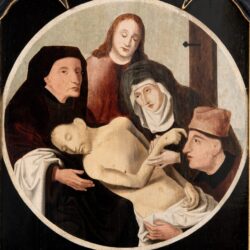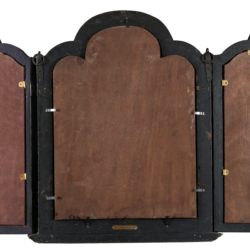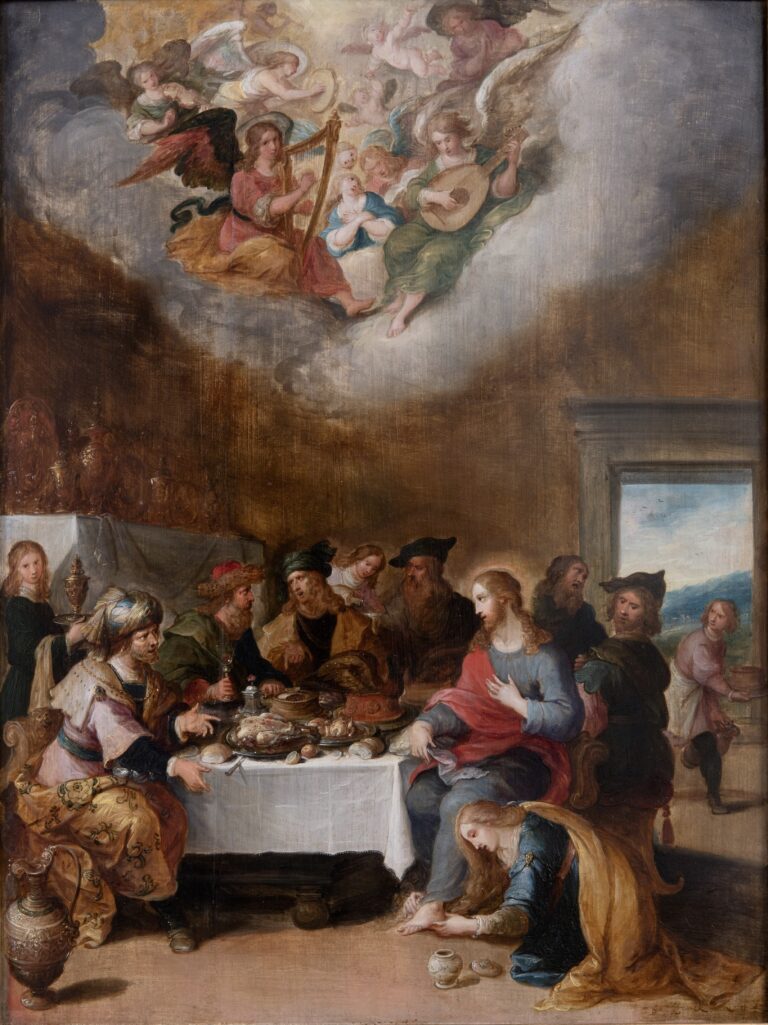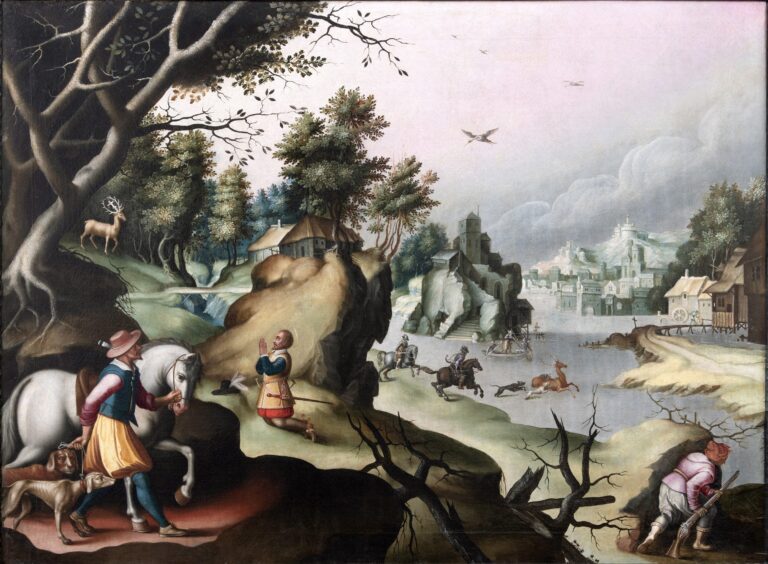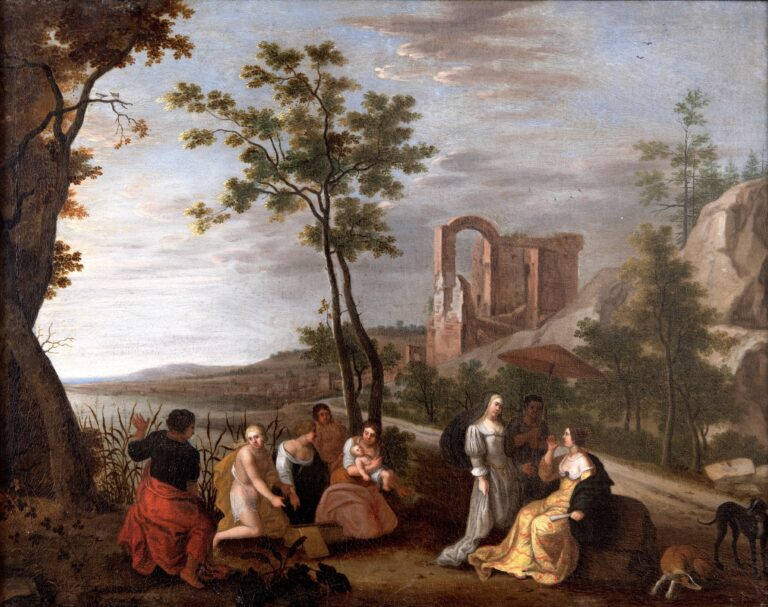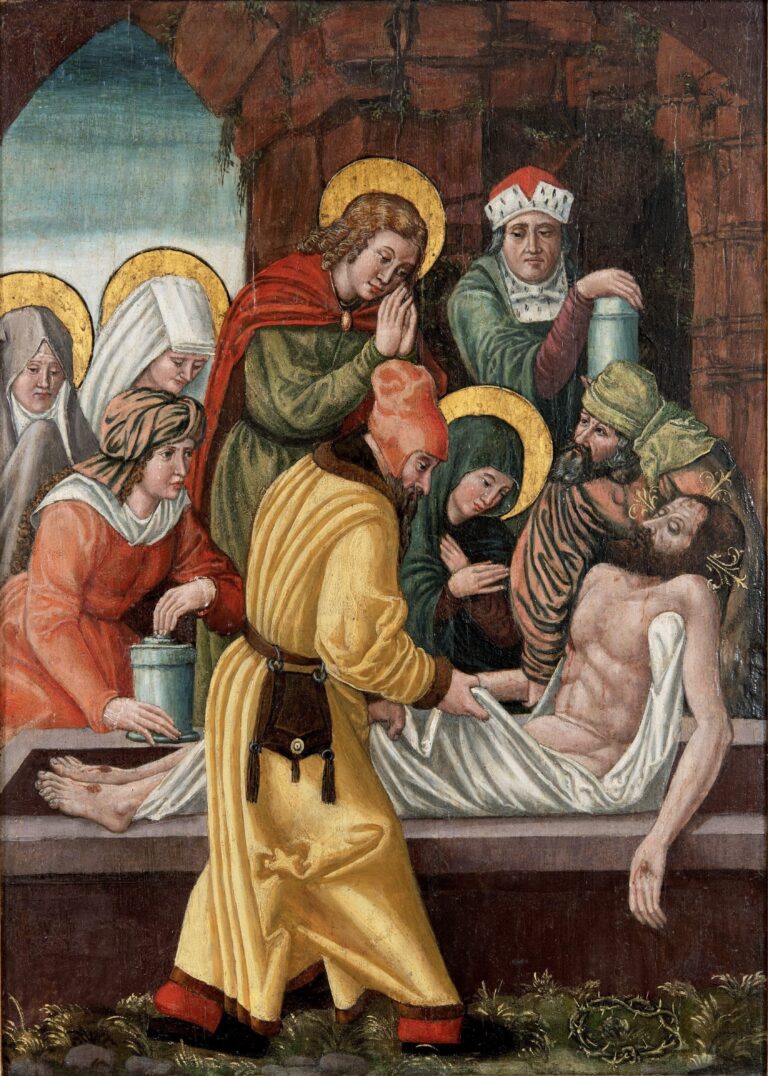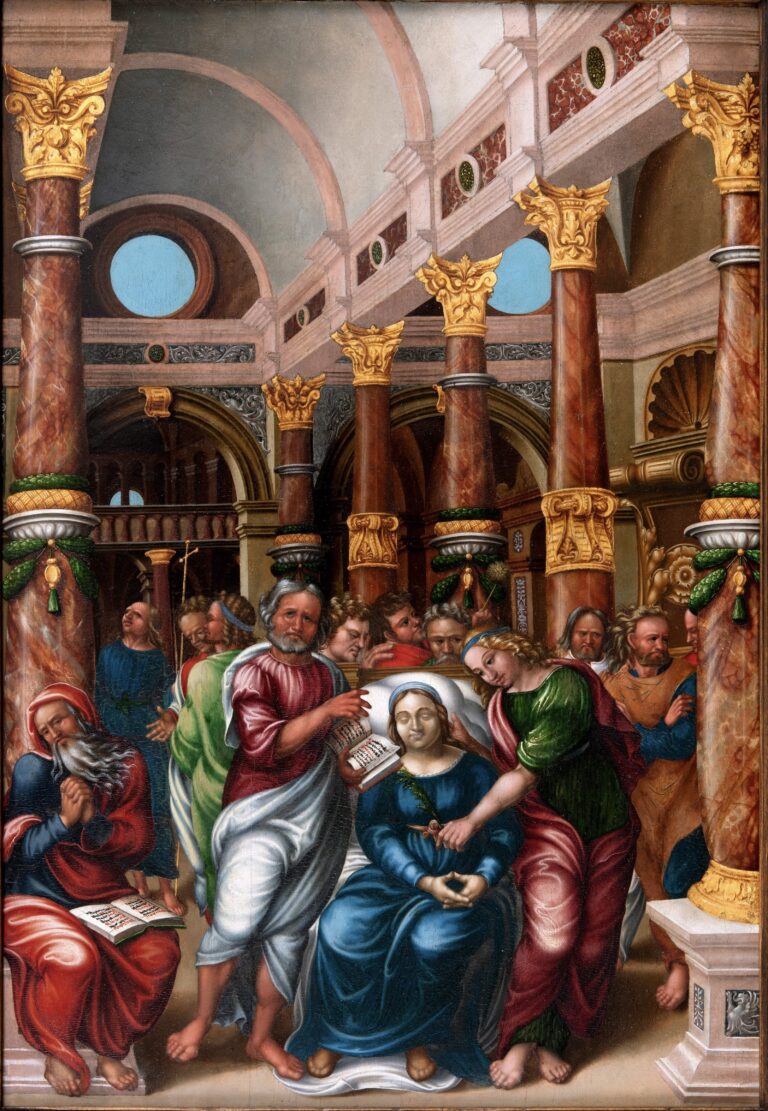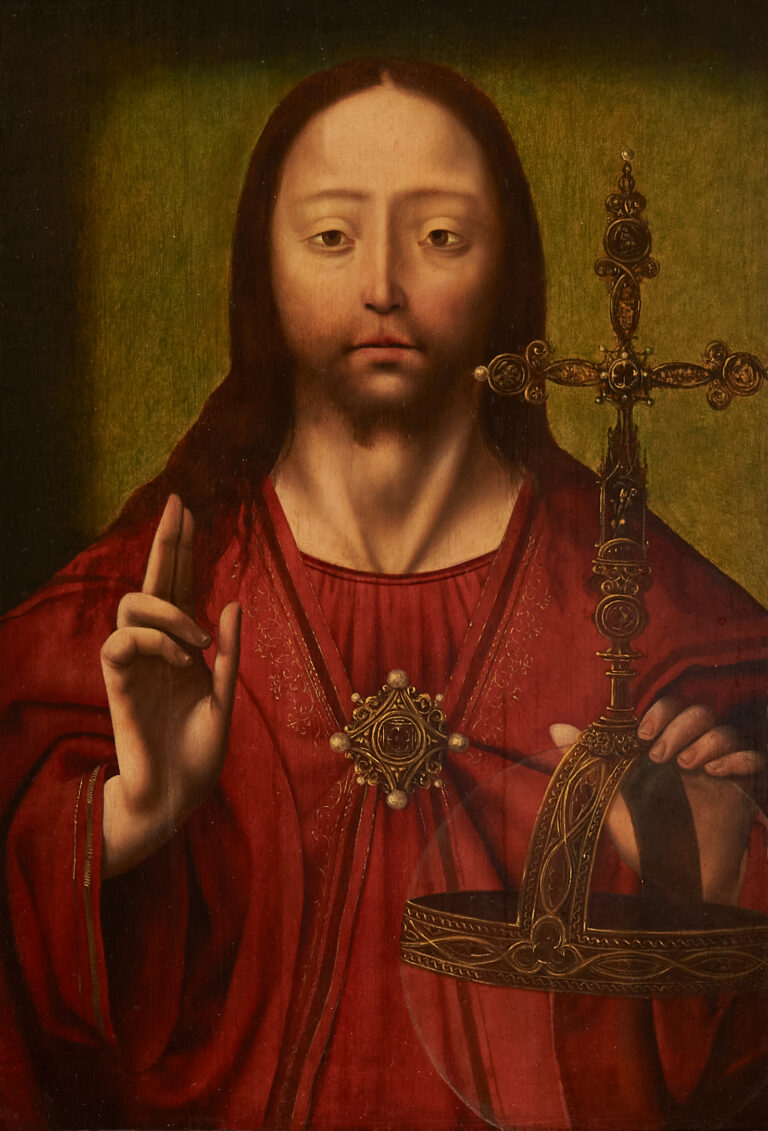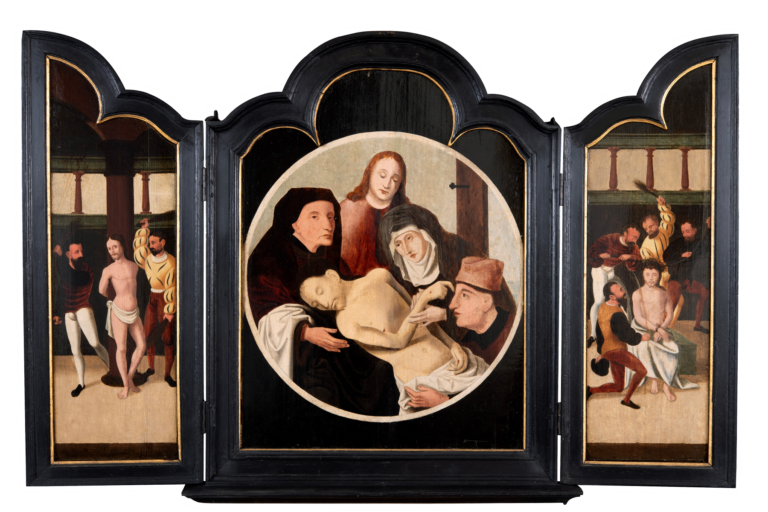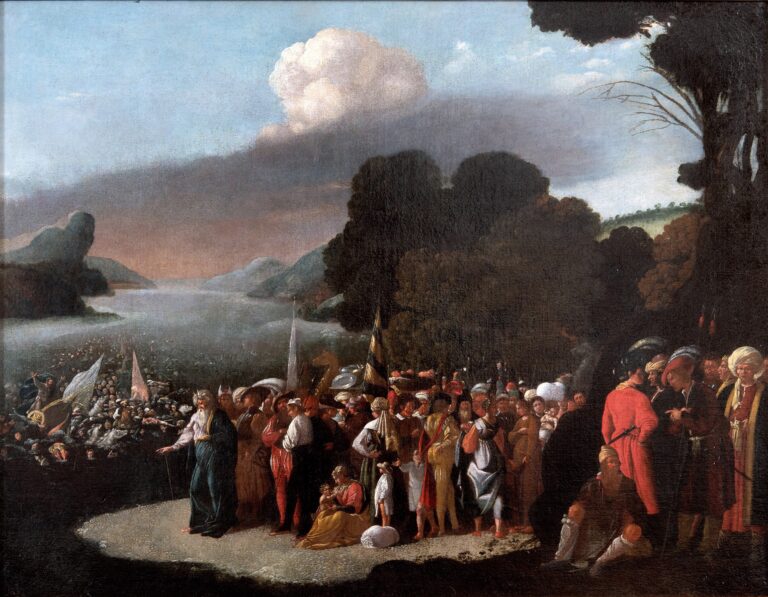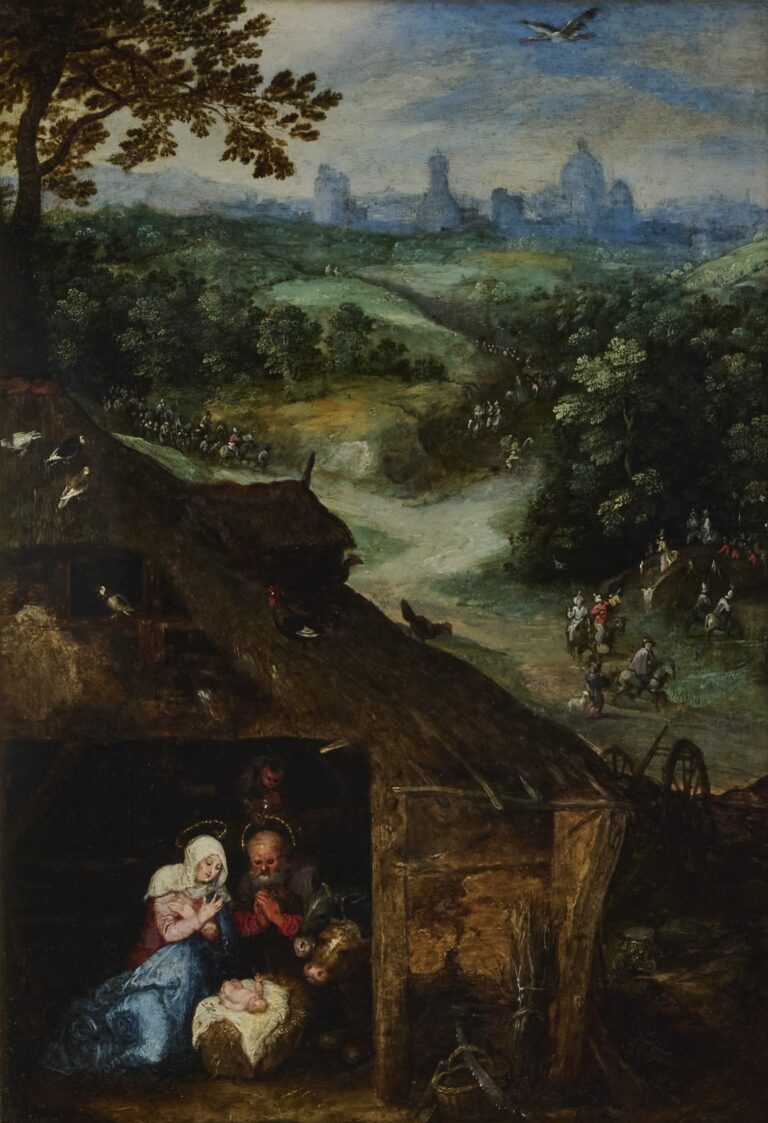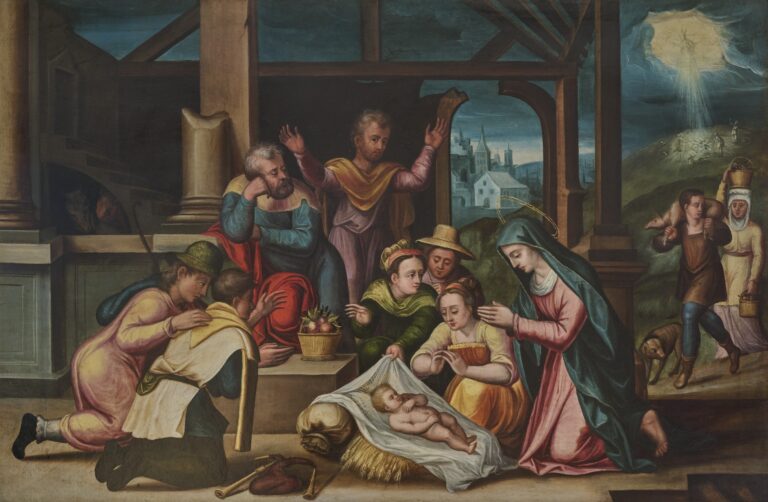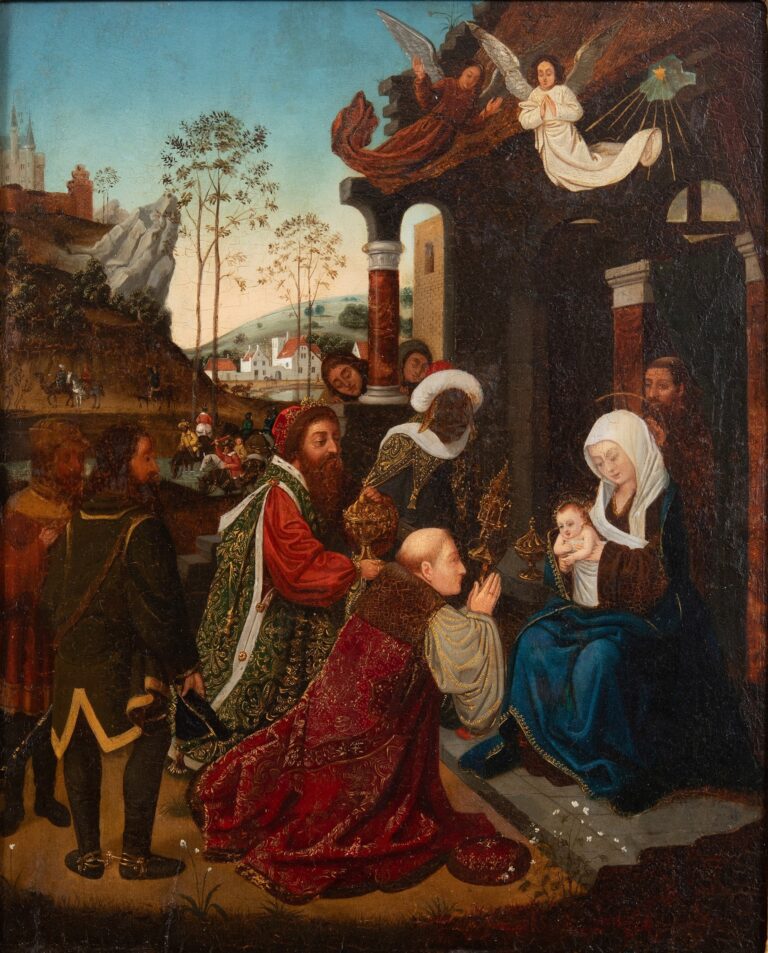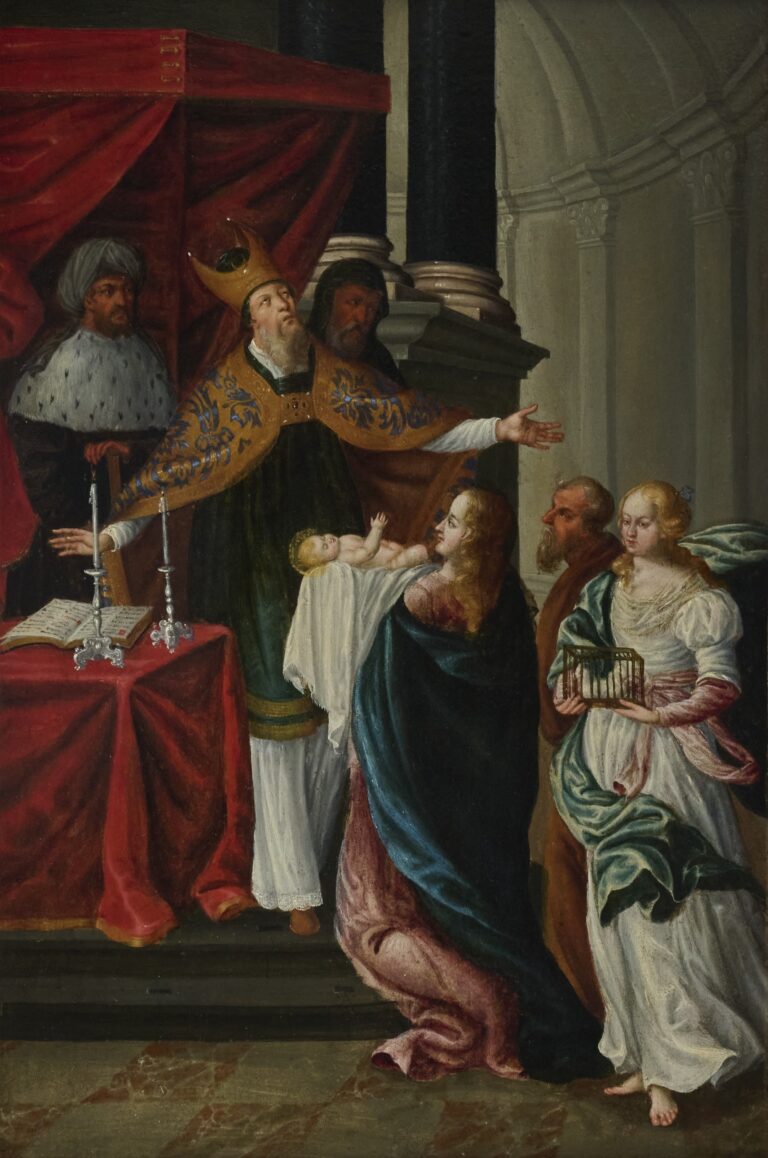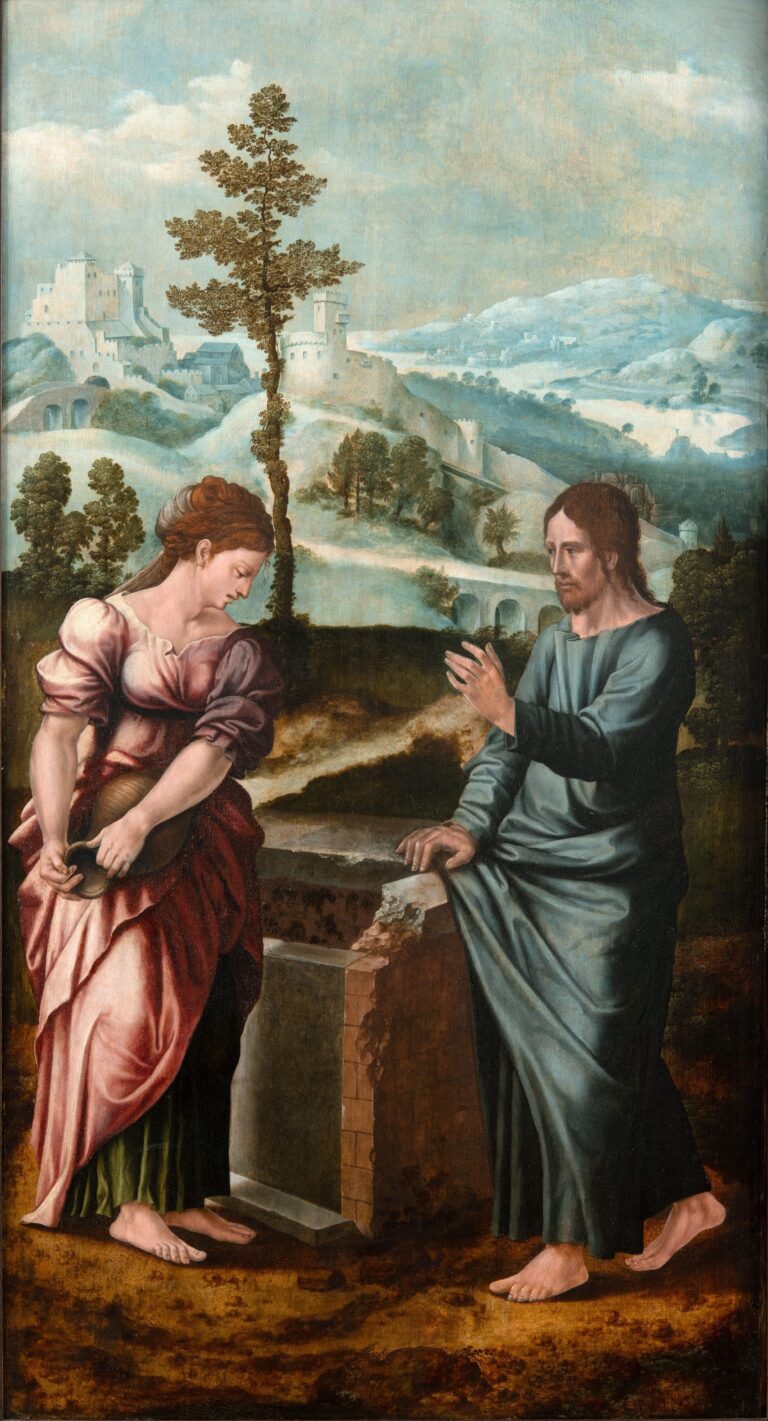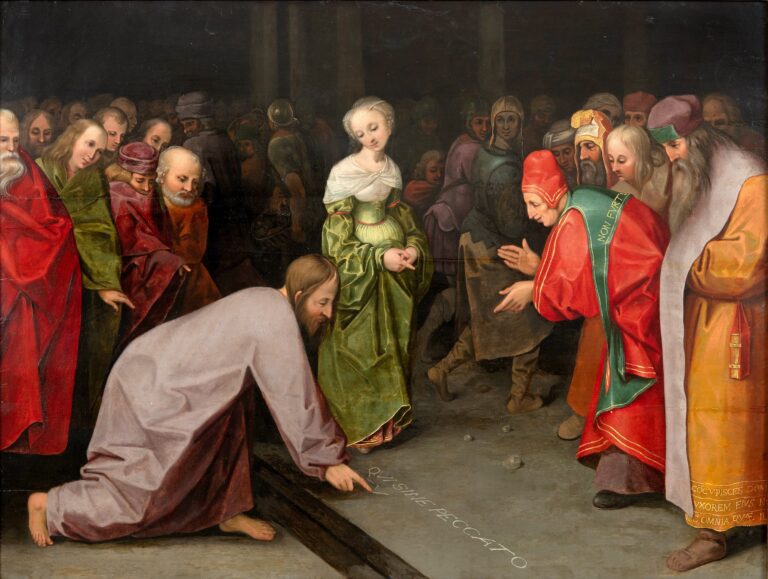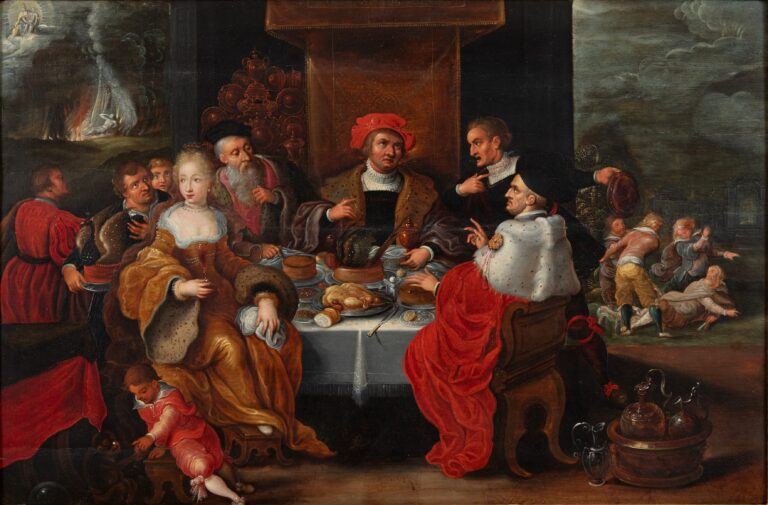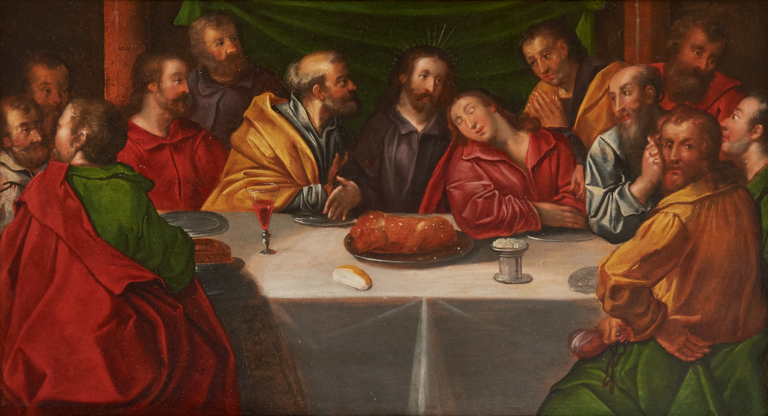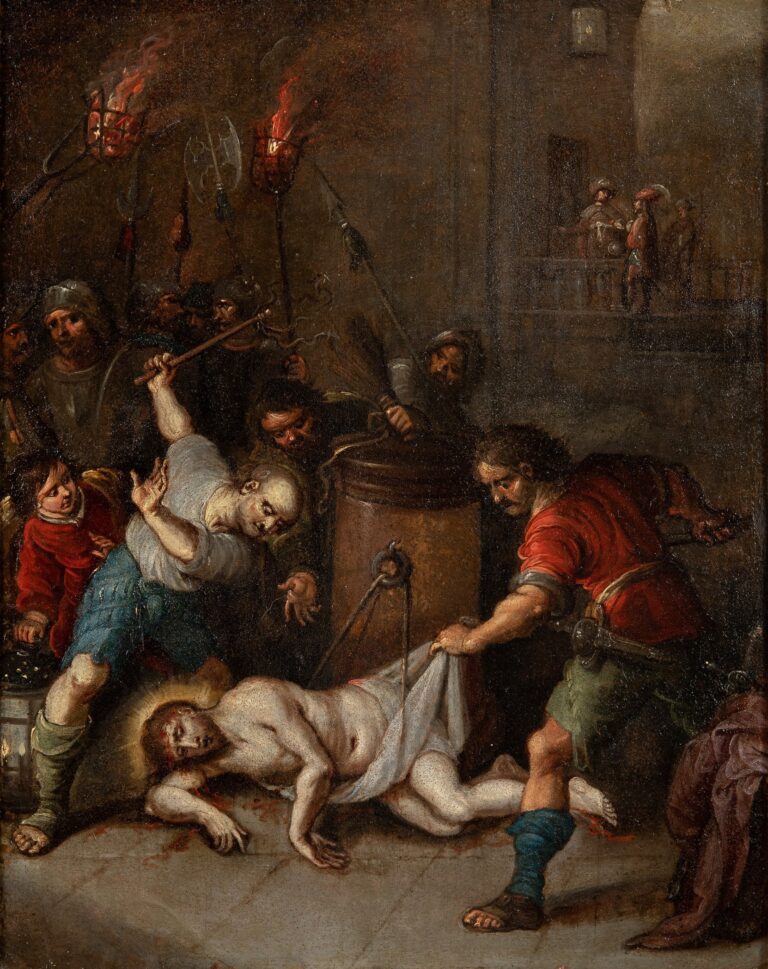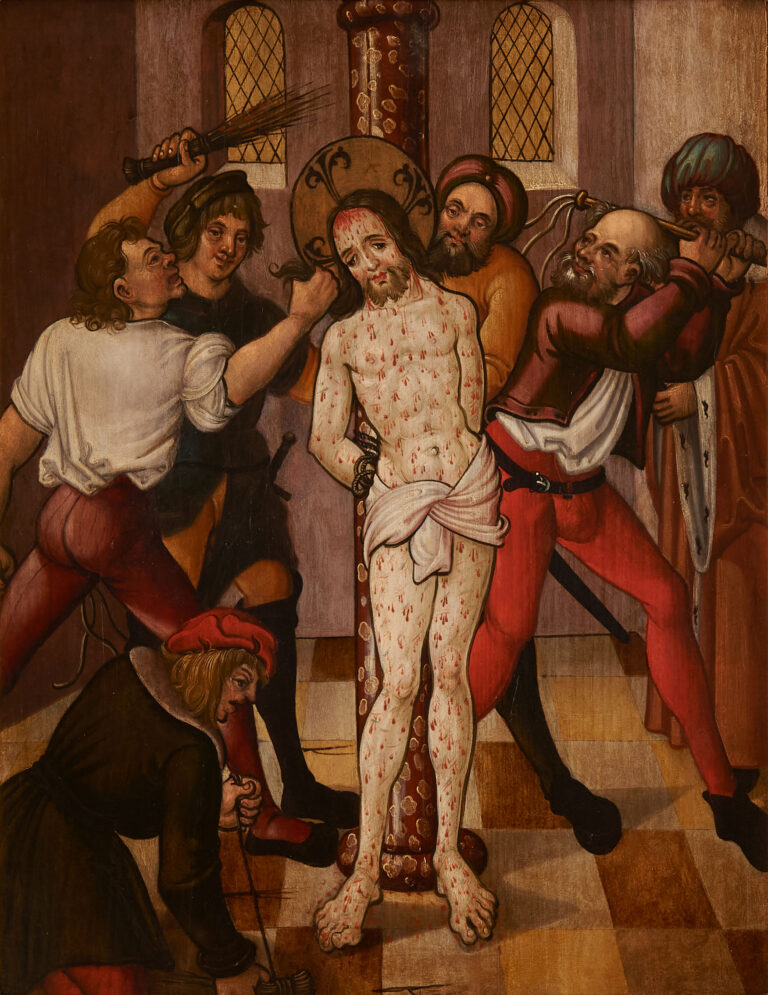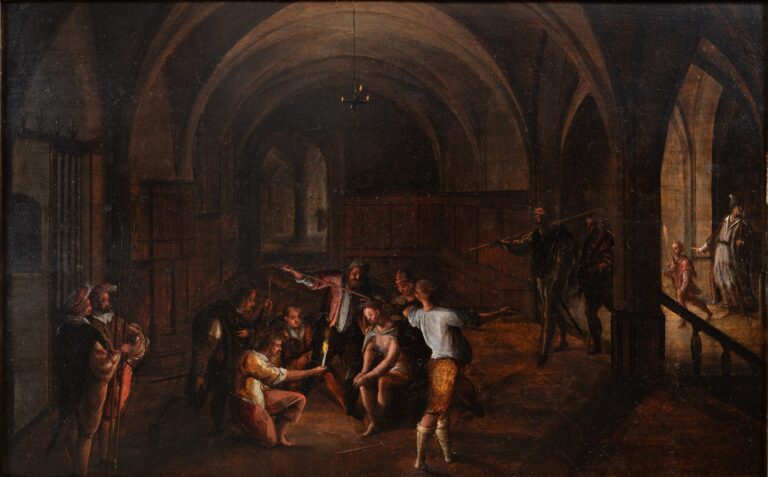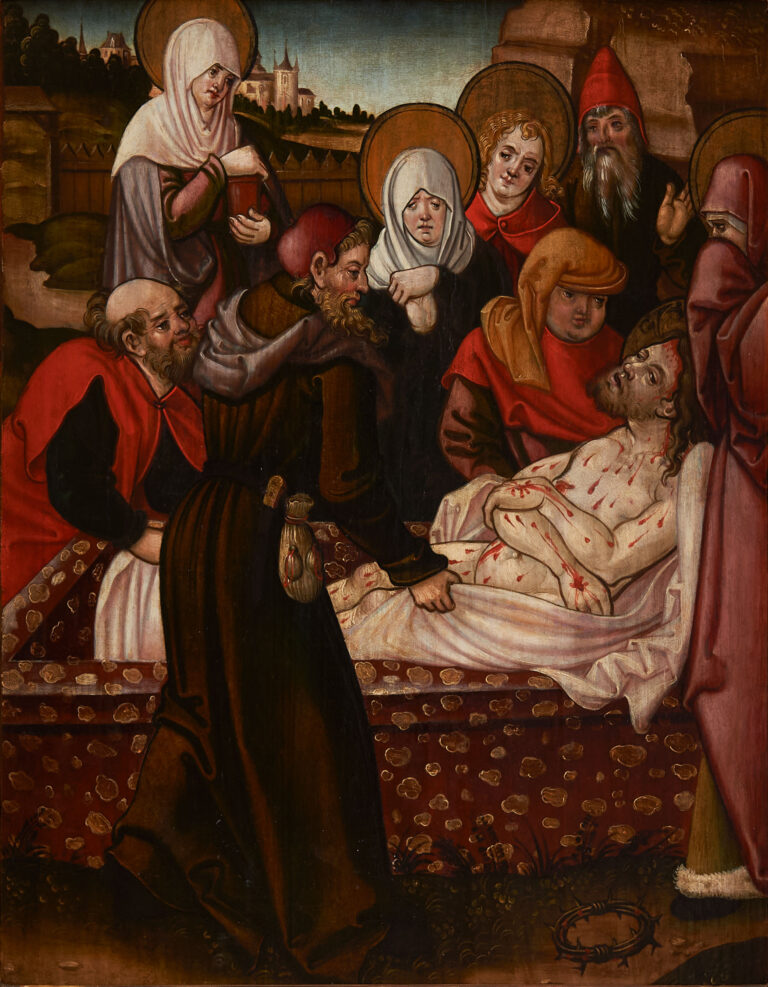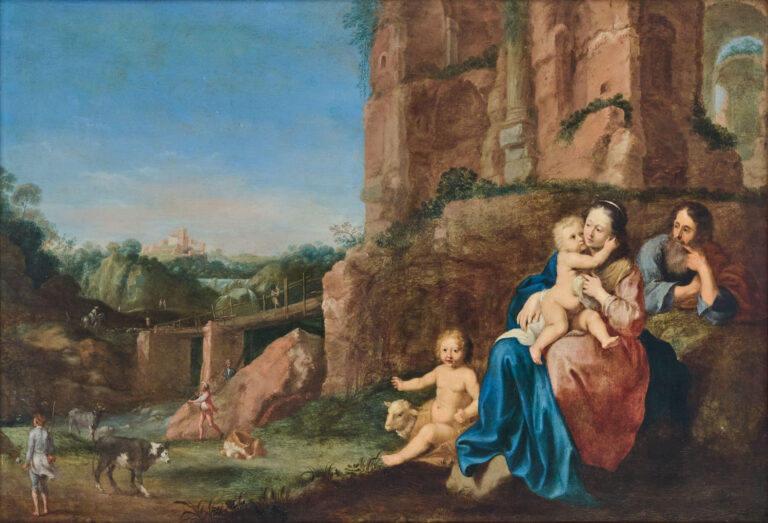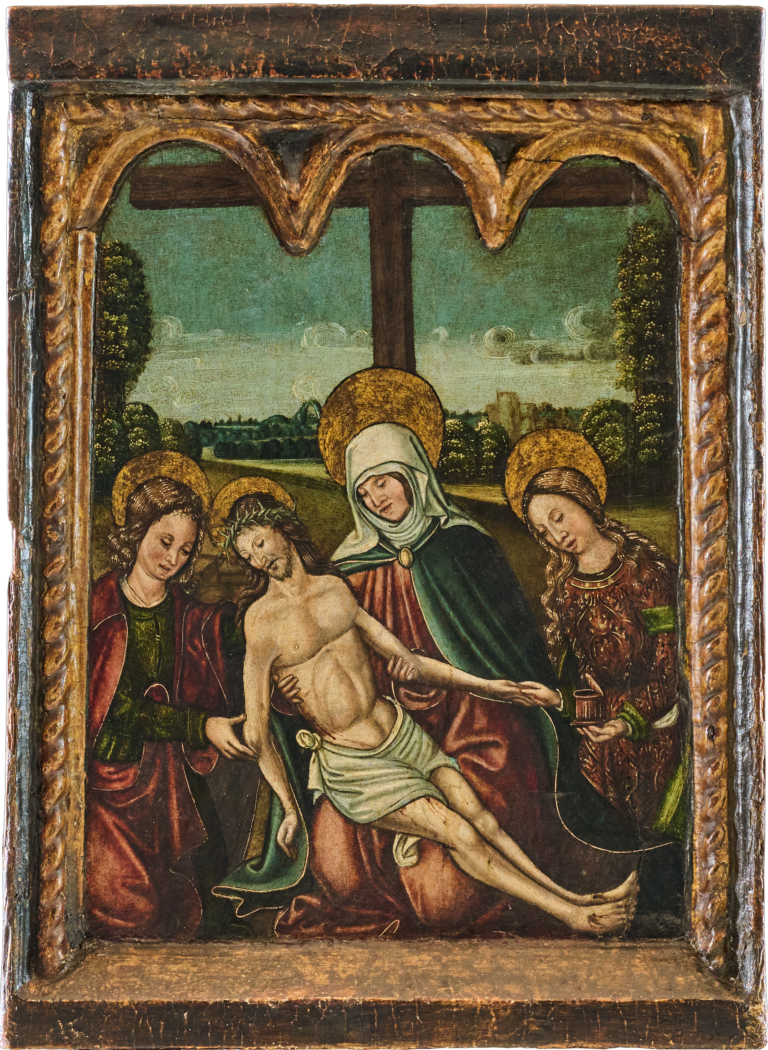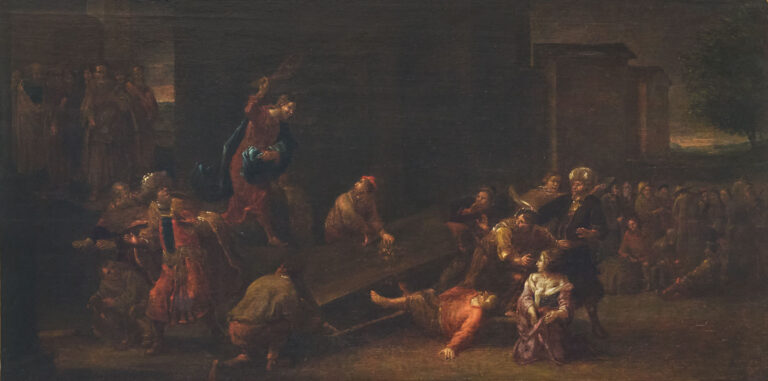Home » Collection » Folding Altar with Scenes from the Passion of Christ
Folding Altar with Scenes from the Passion of Christ
Workshop of Jan van Scorel (1495 – 1562)
This folding altar would have been used for private devotion in the home, and possibly also taken on travels by its owner. It will have served as a reminder of Christ’s suffering and self-sacrifice.
The simple yet emotionally vivid scenes serve this function well. Based on the period clothing in the wings, the altar dates to the mid-1500s and is attributed to the workshop of Jan van Scorel according to an entry in the database of the Netherlands Institute for Art History. The central tondo was likely executed at the same time, but is a copy of an earlier well-known painting by Hieronymus Bosch (1450 – 1516). Bosch’s painting is now believed to be lost, but is known from this and other early copies.
The altar’s central piece is a stirring Lamentation of Christ. Faithful to Bosch’s model, it shows four half-length figures mourning the dead Christ. A Renaissance version of a modern-day “close up shot,” we are brought into the image to join the tightly clustered mourners. A portion of the cross with exposed nail is visible in the background. Otherwise this is a spare take on the Lamentation: there is no landscape to distract us; it is all pathos and emotion.
We see Mary, holding her dead son’s body, along with two other mourners. The one holding Christ head may be Joseph of Arimathaea who had requested Pilate’s permission to take Christ’s body down from the cross (John 19:38). Joseph stares directly out of the canvas, beseeching the viewer to share in the mourners’ sorrow. Above those holding Christ is a third man, probably John the Apostle who was also present at the crucifixion (John 19:26).
The altar’s wings depict earlier scenes from the Passion. On the viewer’s left, is the Flagellation of Christ, in which two men prepare to lash him with scourges. Christ’s tormentors are expressionless, intent on their task. Christ himself looks out at us with calm acceptance of the pain he is about to endure.
On the wing to our right we see three events from the Passion combined. Behind Christ a man in yellow continues the flagellation, as two men on either side of him fashion a Crown of Thorns around Christ’s head. In front of Christ a man kneels with a reed as a mock royal sceptre:
And when they had platted a crown of thorns, they put it upon his head, and a reed in his right hand: and they bowed the knee before him, and mocked him, saying, Hail, King of the Jews! (Matthew 27:29)
Encircled by his tormentors, Christ looks down at the ground, again serenely accepting twin punishments of pain and mockery.
We can imagine this elegant altar as the property of a prosperous 16th Century Dutch merchant. At home after a long day, he unfolds it. Whatever troubles he faced that day, he is reminded of Christ’s far greater suffering some 1500 years before; whatever wrongs he faced, he is reminded of the far greater injustices Christ endured; and however much he rails against his fate, he is reminded of the grace with which Christ accepted his passion and death.
These lessons are equally relevant for us 500 years later, and this artwork equally meaningful.
Provenance: Collection of Joseph Clemens Prince of Bavaria until 1990. Hugo Ruef, Munich, Auction 447, 14-16 November 1990, catalogue number 1394 (with ill. on p. 87). Collection of Hans Constantin Faußner, Munich, until 2024.
Price: £8,950 excl. UK VAT
Medium
Oil on Panel
Painted Surface
Central Tondo Diameter 51 cm (20.1 inches)
Framed
70 x 51 cm (centre panel), 73 x 23.5 cm (side wings), each with a matching end cm. The approx. 10 mm thick wooden panels are each doubled with an approx. 12 mm thick plywood board.
Make an enquiry about this piece
Share this piece
Home » Collection » Folding Altar with Scenes from the Passion of Christ
